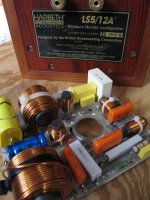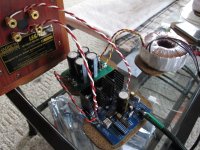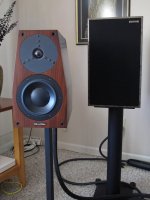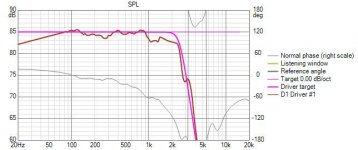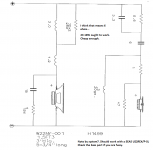You can do an edit on a post for 20 minutes, Boden. You can also delete posts. LR4....
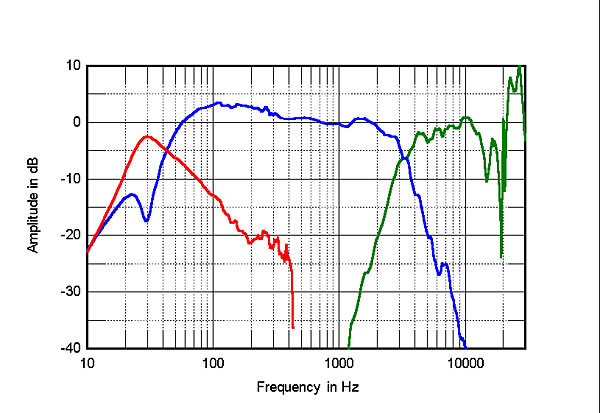
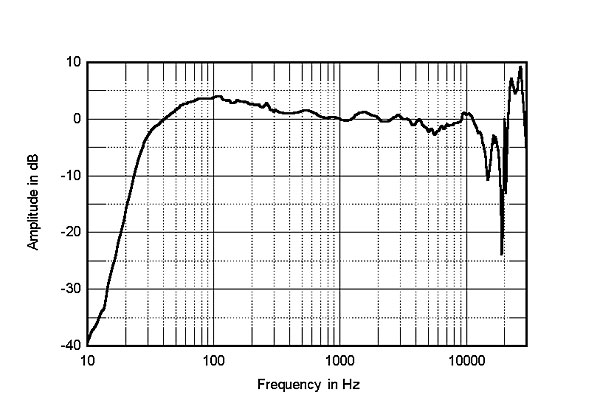
Never occurred to me to estimate the rolloff. And 6dB down at crossover is Linkwitz-Riley phase aligned. Clearly I am well ahead of Mr. Shaw with my current 4th.order. 😱
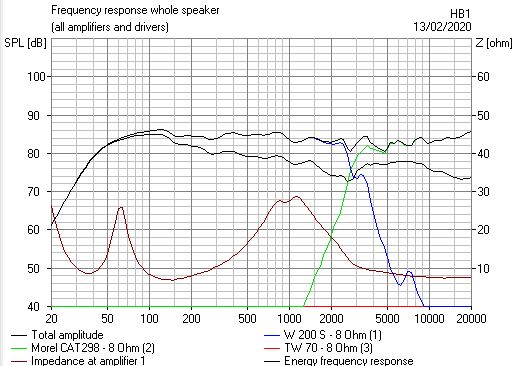
I was hoping it would be BW3.
Never occurred to me to estimate the rolloff. And 6dB down at crossover is Linkwitz-Riley phase aligned. Clearly I am well ahead of Mr. Shaw with my current 4th.order. 😱
I was hoping it would be BW3.
The overlays are not (gu-)estimations, but rather the measured responses overlaid with the texbook curves. Very insightful.
Well, you're 'ahead' in one sense, Steve: you've got steeper slopes. 😉 Because as I noted above, that simulation is not showing an LR4 crossover. It's closer to asymmetric LR6, acoustic.
With pleasure, that's the one I was referring to. 😉 From a quick eyeball, I don't think it's strictly speaking got a name, since assuming an approximate 2.8KHz crossover it's lurking somewhere in the 6th - 7th order region on the high pass & roughly 5th - 6th on the low pass depending on how much variation from the driver's innate response you want to include. Asymmetric LR6 seems a reasonable approximation though.
Certainly not. I do not wish my secrets to be revealed. I knew it was nearer 5th order acoustically. But why should we care?
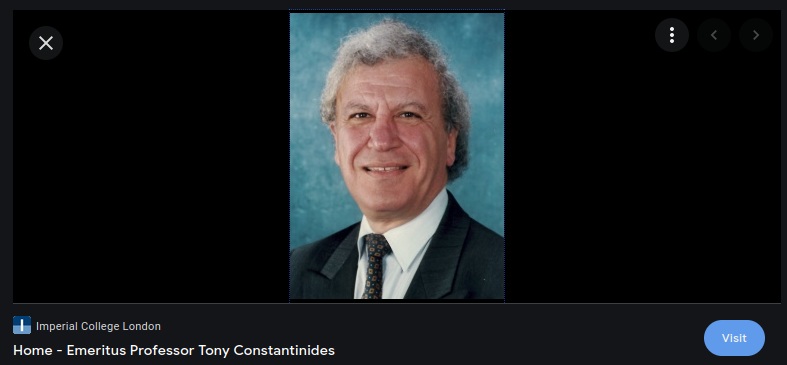
Doctor Constantinides had very clear views on crossovers. Said that component tolerances only affected details at the crossover point. Not in the rest of the band. There is no more to be said, IMO.
Doctor Constantinides had very clear views on crossovers. Said that component tolerances only affected details at the crossover point. Not in the rest of the band. There is no more to be said, IMO.
I don't have the knowledge to contribute in this arguement. But what I can say is that Steves crossovers sounds bloody brilliant to me.
But one thing I find interresting is the fact that the speakers measures more or less identical with tweeter connected in reverse polarity or not.
But to me it sounds magnitudes better with the tweeter connected with reverse polarity to the woofers.
Much smoother, more natural sound. The difference is not subtle. Can someone with more knowledge than me explain why?
But one thing I find interresting is the fact that the speakers measures more or less identical with tweeter connected in reverse polarity or not.
But to me it sounds magnitudes better with the tweeter connected with reverse polarity to the woofers.
Much smoother, more natural sound. The difference is not subtle. Can someone with more knowledge than me explain why?
an Alan'ism... branding.
That appears to be an Alan'ism, narrow vision of a designer with a singular focus, like a famous chef, "seasoning" a dish they "way they like it". Alan has mentioned working alone in his "barn / country setting".
As an owner of the product, with direct (extensive) experience with these speaker(s). I am NOT SURE that I agree with this model of design and production.
Also, (in interviews) Alan has said, his primary model of design is measurement. I wonder, as hearing acuity suffers with age??
I also have a pair of the LS5/12a, that I hacked, pulled the crossover, wired an x-kits (bi-amp) set-up to and started evaluations. The complicated BBC x-over, while doing its job... killed the efficiency, the fundamental sound quality. I have never heard the 5/12 sound more open, extended and dynamic... [this is, sort off topic] My point do not get hung up on marketing claims!!!
DIY (speaker) efforts has never been more robust. I want to build dedicated amps, crossovers and speakers... the 5/12 was my proof of concept model.
POWER ON (ladies and) GENTS!
They are tuned to be smooth in general, but their final test is spoken word said Allan Shaw in a video on youtube. If it doesn't present the voice like it should, it doesn't pass.
That appears to be an Alan'ism, narrow vision of a designer with a singular focus, like a famous chef, "seasoning" a dish they "way they like it". Alan has mentioned working alone in his "barn / country setting".
As an owner of the product, with direct (extensive) experience with these speaker(s). I am NOT SURE that I agree with this model of design and production.
Also, (in interviews) Alan has said, his primary model of design is measurement. I wonder, as hearing acuity suffers with age??
I also have a pair of the LS5/12a, that I hacked, pulled the crossover, wired an x-kits (bi-amp) set-up to and started evaluations. The complicated BBC x-over, while doing its job... killed the efficiency, the fundamental sound quality. I have never heard the 5/12 sound more open, extended and dynamic... [this is, sort off topic] My point do not get hung up on marketing claims!!!
DIY (speaker) efforts has never been more robust. I want to build dedicated amps, crossovers and speakers... the 5/12 was my proof of concept model.
POWER ON (ladies and) GENTS!
Attachments
Certainly not. I do not wish my secrets to be revealed. I knew it was nearer 5th order acoustically. But why should we care?
Because it's fundamentally different to LR4, and accuracy actually does have some relevance. As I know you are well aware. 😉 For instance, if somebody harps on about the advantages of 3rd order Butterworth, but the filter they then present is not 3rd order Butterworth at all, it renders all their arguments for or against that particular filter type irrelevant in the given instance. The same applies to LR4 and any other type you care to name.
That's why some of us care. Including yourself. 😉
Doctor Constantinides had very clear views on crossovers. Said that component tolerances only affected details at the crossover point. Not in the rest of the band. There is no more to be said, IMO.
No, and with certain well-understood exceptions (such as ESR in certain applications) he's quite right, but on a quick perusal of this thread, it appears that nobody has actually mentioned components or the tolerances thereof so its sudden introduction is a little -mysterious.

Last edited:
I wish Dynaudio sold drivers
I would build with them IN A HEARTBEAT.
~ Expensive but, outstanding ~
These 7" Esotar 17WLQ give the "other"
speakers a run for the money.
The 5" in the Harbeth 5/12 its sibling...
I prefer the "large" (over 1 inch) tweeters
for their power, response, weight.
I would build with them IN A HEARTBEAT.
~ Expensive but, outstanding ~
These 7" Esotar 17WLQ give the "other"
speakers a run for the money.
The 5" in the Harbeth 5/12 its sibling...
I prefer the "large" (over 1 inch) tweeters
for their power, response, weight.
I don't have the knowledge to contribute in this arguement. But what I can say is that Steves crossovers sounds bloody brilliant to me.
But one thing I find interresting is the fact that the speakers measures more or less identical with tweeter connected in reverse polarity or not.
But to me it sounds magnitudes better with the tweeter connected with reverse polarity to the woofers.
Much smoother, more natural sound. The difference is not subtle. Can someone with more knowledge than me explain why?
I don't know what speaker is being referred to but if the filter in question does have a genuine Butterworth characteristic (as in not just having an x order Butterworth electrical filter somewhere) then it should in theory sum flat with the tweeter in either polarity. It may sound different though depending on which polarity you use though since the drivers will be either 270 degrees apart in phase, or 90 degrees, and these have different lobes / tilts in the transition band.
I would build with them IN A HEARTBEAT.
~ Expensive but, outstanding ~
These 7" Esotar 17WLQ give the "other"
speakers a run for the money.
The 5" in the Harbeth 5/12 its sibling...
I prefer the "large" (over 1 inch) tweeters
for their power, response, weight.
They used to. They stopped, partly because it's a small market, and possibly because of some QA / QC issues. The nearest you'll get now is Morel -don't forget the companies are indirectly related. I just wish Morel would get their act together & improve their data sheets a bit -the FR & impedance graphs aren't exactly the last word in detail / quality. Not that they're alone in that of course, so I'm not singling them out. 😉
All these target slopes are a complete waste of time! Why? Because they assume time-alignment! Which is a lot of trouble. You end up bending slopes.
But am interested in theoretical values, because they make for good impedance:
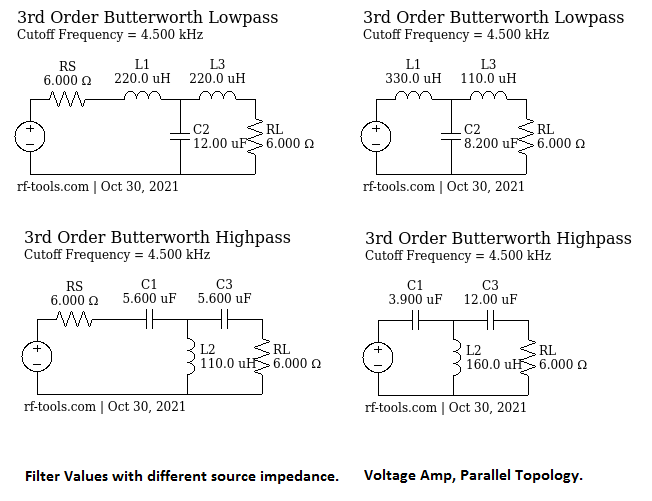
RF Tools | LC Filter Design Tool
I am interested in exactly what cbarth got working with his Vifa polycone/Morel softdome:
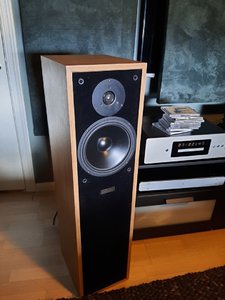
Anyway, an interesting discovery. 2kHz Madisound Crossover design service:
W22NY-001 + H1499 2way Passive Crossover Design - Madisound Speaker PDF Library
Here's the Seas W22NY001 Excel woofer, a fine and pricey beast:
E0045-08S W22NY001
Seas 27TBCD/GB-DXT waveguide metal tweeter which interested us earlier.
H1499-06 27TBCD/GB-DXT
I'm sure that will work, even though I haven't simmed it myself.
But am interested in theoretical values, because they make for good impedance:
RF Tools | LC Filter Design Tool
I am interested in exactly what cbarth got working with his Vifa polycone/Morel softdome:
Anyway, an interesting discovery. 2kHz Madisound Crossover design service:
W22NY-001 + H1499 2way Passive Crossover Design - Madisound Speaker PDF Library
Here's the Seas W22NY001 Excel woofer, a fine and pricey beast:
E0045-08S W22NY001
Seas 27TBCD/GB-DXT waveguide metal tweeter which interested us earlier.
H1499-06 27TBCD/GB-DXT
I'm sure that will work, even though I haven't simmed it myself.
Targets are not a waste of time: a properly designed passive filter takes the difference between acoustic centres of the drivers ( the Z plane difference) into consideration and works towards optimization for there. The relative distance between the acoustic centres can be establised by measuring woofer and tweeter unfiltered in parallel connection with a single point measurement, and then sim the sum of the individual raw responses with the tweeter kept on Z =0 and the Woofer Z increased in small steps until the measured and the simmed sum responses match.
Just so. It has also been repeatedly noted that on flat baffles, asymmetric slopes are typically employed -usually with a shallower slope on the woofer / midbass to correct for that very issue and provide the target characteristic. That is why we sometimes apply the term 'asymmetric LR4', 'asymmetric LR6' etc. as I have above.
I do know how it works, guys. Just try not to bore and confuse 95% of people who don't have a technical background. You'd be amazed at the number of people who come to my inbox for advice rather than get confused by the forum stuff about microphones and simulators, but are willing to solder a few wires.
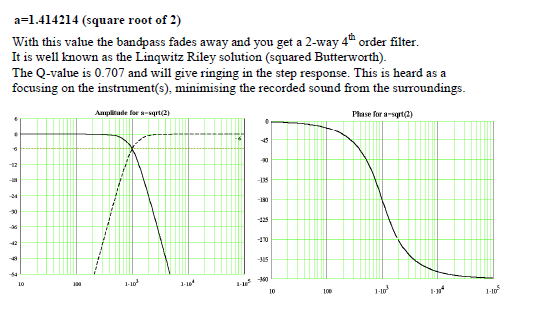
Anyhow, have been quickly updating the Madisound filter for these two affordable drivers:
H1659-08 U22REX/P-SL
H1499-06 27TBCD/GB-DXT
Looks similar enough to the W22, that I'd have to simulate it to see if any changes are needed, but I doubt it unless you are extremely fussy. Which I am not.
E0045-08S W22NY001
Anyhow, have been quickly updating the Madisound filter for these two affordable drivers:
H1659-08 U22REX/P-SL
H1499-06 27TBCD/GB-DXT
Looks similar enough to the W22, that I'd have to simulate it to see if any changes are needed, but I doubt it unless you are extremely fussy. Which I am not.
E0045-08S W22NY001
Attachments
- Home
- Loudspeakers
- Multi-Way
- Woofer suggestion for Harbeth like 2 way
